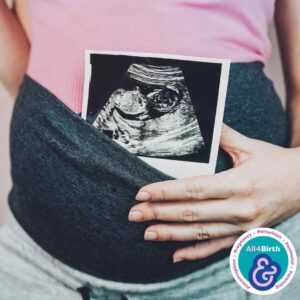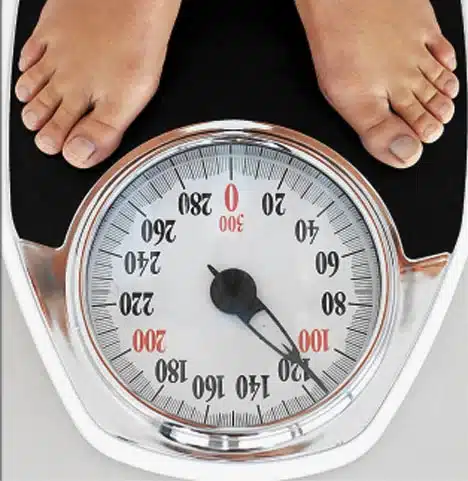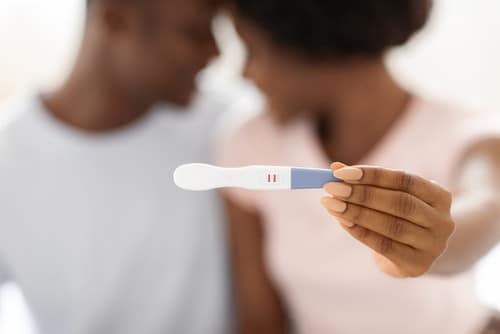Factsheet – Physical activity before, during and after pregnancy
Dr. Rehana Jawadwala
Founder of Mummy Yoga, yoga teacher and author
Instagram @mummyyoga
Summary
This fact sheet provides a concise summary on the evidence around physical activity before, during and after pregnancy.
This document will help you understand the benefits and risks on engaging in physical activity during your perinatal period.
The fact sheet explains what kinds of activities will be beneficial, how much is good enough and how physical activity can help with some common physical complaints.
We will also highlight the benefits of physical activity for birthing and the long–term impact it may have on your baby and perhaps the future generation/s.
What we know
Physical activity before, during and after pregnancy has many benefits and very few downsides1. In fact it is not only safe, but a sedentary lifestyle is detrimental to both you and your baby. Clinically meaningful reduction in risks of developing gestational diabetes, hypertension, more energy and less fatigue, fewer complications at birth, faster recovery improved bone density postnatally and reduced risks of metabolic diseases for a babies when they grow up are just some of the reasons exercise should not just be allowed during pregnancy but should be actively encouraged.
The new Canadian guidelines in 2019 now says exercise should be imperative during pregnancy, based on the emerging evidence2.

How much exercise do we need?
The department of health suggests an average of 150 minutes of moderate intensity exercise (where you can still just about talk in full sentences) a week is what we need to see some cumulative benefits. However, these 150 minutes need not come from “formal” exercise sessions like running or gym. If you do 20 minutes of gardening, walking the dog etc. all count. There are no particular activities that you can’t do as long as you can do them with a degree of confidence as it is the risk of falling that can be detrimental, not the activity itself.
Slower paced activities such as Yoga, Pilates and swimming provide a balanced mind–body approach that may benefit your physical and mental wellbeing.
The research is less robust on high intensity exercise where your heart rate can exceed 90% of your maximum heart rate capacity (you are unable to talk).
Exercise and miscarriage risks
There is no empirical data that suggests moderate intensity exercise can cause miscarriage in any trimester including the first.
In fact, there are a few well designed studies that indicate that if you were active in the first trimester when your placenta was forming, your placenta will benefit from having more functional capacity and be able to distribute more blood (which contains oxygen and nutrients) to the baby3,4.
Research shows that your baby too can tolerate moderate intensity exercise without any issues. The small temporary reduction in blood supply to the uterus when you exercise is compensated by better blood delivery and nutrient exchange at the cellular level. Babies also tend to benefit from the improved antioxidant levels in your body produced as a by-product of exercise.
Physical activity and pregnancy complications
There is now robust evidence that staying physically active can prevent and even help manage gestational diabetes. Large scale studies4 have shown that women who were active before and during pregnancy have a significantly lower chance of developing gestational diabetes and that exercise has a central role in managing such conditions, at times even more than diet modification alone.
Physical activity and birth outcomes
In 2019 a comprehensive analysis6 on the impact of exercise on birth outcomes collated from 113 studies which amounted to 52,858 women concluded that antenatal exercise was not associated with increased rates of preterm/prelabour rupture of membranes, caesarean section, induction of labour, vaginal tears or diastasis recti.
The evidence is less clear if exercise had any impact on reducing length of labour. There is some evidence that suggests that the first stage of labour is shorter in women who are more fit.
Physical activity and mental health
When we feel emotionally drained our brain monoamine (serotonin, dopamine and nor-epinephrine) levels falls, we feel lethargic and tired and less capable of coping with the situation at hand. Regular exercise has shown to improve our capacity to withstand mental pressures of stress and anxiety. Regular exercise activates the monoamine system and increases the brain’s capacity to withstand more stress, feel less stressed and improve recovery from stressful situations. Your physical activity levels before and during pregnancy therefore has a protective effect during labour too.
Postnatal physical activity
The evidence suggests better recovery from birth in women who start physical activity sooner rather than later. Be mindful to start slow and build up as you feel stronger.
There is no indication that you cannot exercise after a few weeks of a c-section. Most guidance prudently suggests you wait for your 6-week check before embarking on a regimented exercise programme. However physical activity has been shown to enhance recovery from all sorts of surgical procedures. Sedentary lifestyle will lengthen your recovery time so move mindfully and slow down if you need to.
Babywearing exercise is now a popular and effective way to get active without logistical barriers of childcare and there is emerging evidence that suggests babywearing promotes healthy bonding between infant and carer.

Breastfeeding and physical activity
Research indicates that the magnitude of weight loss is rather small if you were to rely only on breastfeeding to help you lose all of your excess body fat. You need to rely on exclusive breastfeeding for at least 6 months to see a weight loss effect of lactation. A study7 that looked at over 36000 Danish breastfeeding women have reported excess weight loss only in women who were not overweight or obese.
Impact of your physical activity on your child’s adult life
Children of women who exercised during pregnancy benefited from leaner body mass and better cognitive function at even 5 years of age8.
Recent studies have shown that your exercise during pregnancy reduces your child’s risk of developing Alzheimer’s and even certain tumours9. There is also emerging evidence that in some cases the benefits of your antenatal exercise last beyond one generation!
Mothers and families: how to use the evidence
What can you do in practical terms?
- Reduce the time spent sitting down.
- Do not stop exercising in the first trimester in fear of causing a miscarriage.
- You can start exercising if you haven’t been doing so at any time during pregnancy. Start very slowly and monitor your health, if possible, seek professional guidance from a suitably qualified perinatal exercise professional and slow down when you need to.
- Join a specialist pregnancy/postnatal exercise group. It will help you commit to some exercise, make friends and keep up your motivation. Make sure you pick a time of the day when you are most likely to go both time and energy wise.
- Take care of your mental health through physical activity. Applying breath modulation and meditation into your activity will ensure you manage stress, anxiety and general worry at a healthy level.
- If you have been using weights before pregnancy do not stop when you get pregnant. Modify your exercises to keep your intensity in the moderate levels. You should comfortably be able to do 15-20 repetitions for each exercise and not be completely out of breath.
- Ability to maintain full sentences when you talk during aerobic exercises such as walking, swimming and cycling are a good measure of moderate intensity exercise.
- Aim to get some variety into your exercise program. Add flexibility, mobility and core strengthening exercises to your mix.
- Aim to get 3-5 active sessions of 30-50 min each in a week. Public Health England has a simple 150 min a week guidance that is a good measure.
- Keep hydrated throughout the day (again alarm prompts can work very well here) and eat a healthy snack before (about 30-60 min) and a good meal after.
- If you are on medications, first make a specific exercise plan with your GP/midwife or qualified exercise specialist and keep a record of your activities with any change symptoms or your well-being. Review this plan regularly or when you think necessary.
Midwives and birth workers: how to use the evidence
Midwives and GPs are the first set of health care professionals that will have contact and influence on a pregnant woman. If you have the opportunity this is a conversation worth starting even before a woman gets pregnant.
As, it is not always possible to meet women at preconception stage, so a general public health message embedded throughout the perinatal period is also key.
Try using the 5As framework
- Ask – Ask permission to talk about physical activity.
- Assess – Assess current physical activity levels and explore barriers and motivations.
- Advise – Advise women of the key benefits of physical activity for pregnancy/birth/baby. Highlight the difference between “exercise” and staying active through lifestyle choices to reduce the burden of guilt.
- Agree – Agree on realistic changes to physical activity modification.
- Assist – Provide resources, point to appropriate professional support if needed and most importantly arrange for regular follow ups embedded in routine appointments for accountability.
Links to other resources
 Books
Books
Active Birth – Revised Edition: The New Approach to Giving Birth
By Janet Balaskas
Published by, The Harvard Common Press, 1992
Preparing for a Gentle Birth: The Pelvis in Pregnancy
By Blandine Calais-Germain and Núria Vives Parés
Published by, Healing Arts Press, 2011
Why Pregnancy and Postnatal Exercise Matter
By Dr. Rehana Jawadwala
Published by Pinter & Martin, 2020
 Websites
Websites
https://www.rcog.org.uk/en/patients/patient-leaflets/physical-activity-pregnancy/
https://www.nhs.uk/pregnancy/keeping-well/exercise/
References
- Mudd, L. M., Owe, K. M., Mottola, M. F., & Pivarnik, J. M. (2013). Health benefits of physical activity during pregnancy: an international perspective. Med Sci Sports Exerc, 45(2), 268-77.
- Mottola, M. F., Davenport, M. H., Ruchat, S.-M., Davies, G. A., Poitras, V. J., Gray, C. E., … Zehr, L. (2018). 2019 Canadian guideline for physical activity throughout pregnancy. British Journal of Sports Medicine, 52(21), 1339.
- Clapp III, J. F. (2003). The effects of maternal exercise on fetal oxygenation and feto-placental growth. European Journal of Obstetrics & Gynecology and Reproductive Biology, 110, S80-S85.
- Clapp III, J. F., Kim, H., Burciu, B., & Lopez, B. (2000). Beginning regular exercise in early pregnancy: effect on fetoplacental growth. American journal of obstetrics and gynecology, 183(6), 1484-1488.
- Zheng, J., Wang, H., & Ren, M. (2017). Influence of exercise intervention on gestational diabetes mellitus: a systematic review and meta-analysis. Journal of endocrinological investigation, 40(10), 1027-1033.
- Davenport, M. H., Ruchat, S. M., Sobierajski, F., Poitras, V. J., Gray, C. E., Yoo, C., Skow, R. J., Jaramillo Garcia, A., Barrowman, N., Meah, V. L., Nagpal, T. S., Riske, L., James, M., Nuspl, M., Weeks, A., Marchand, A. A., Slater, L. G., Adamo, K. B., Davies, G. A., Barakat, R., … Mottola, M. F. (2019). Impact of prenatal exercise on maternal harms, labour and delivery outcomes: a systematic review and meta-analysis. British journal of sports medicine, 53(2), 99–107.
- Baker, J. L., Gamborg, M., Heitmann, B. L., Lissner, L., Sørensen, T. I., & Rasmussen, K. M. (2008). Breastfeeding reduces postpartum weight retention. The American journal of clinical nutrition, 88(6), 1543–1551.
- Clapp III, J. F. (1996). Morphometric and neurodevelopmental outcome at age five years of the offspring of women who continued to exercise regularly throughout pregnancy. The Journal of pediatrics, 129(6), 856-863.
- Laker, R. C., Wlodek, M. E., Connelly, J. J., & Yan, Z. (2013). Epigenetic origins of metabolic disease: the impact of the maternal condition to the offspring epigenome and later health consequences. Food Science and Human Wellness, 2(1), 1-11.
















